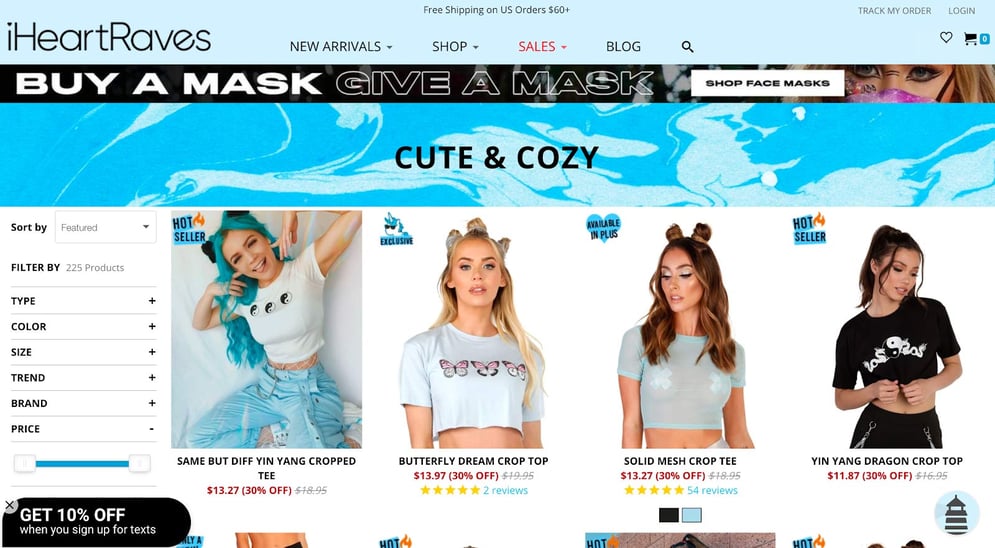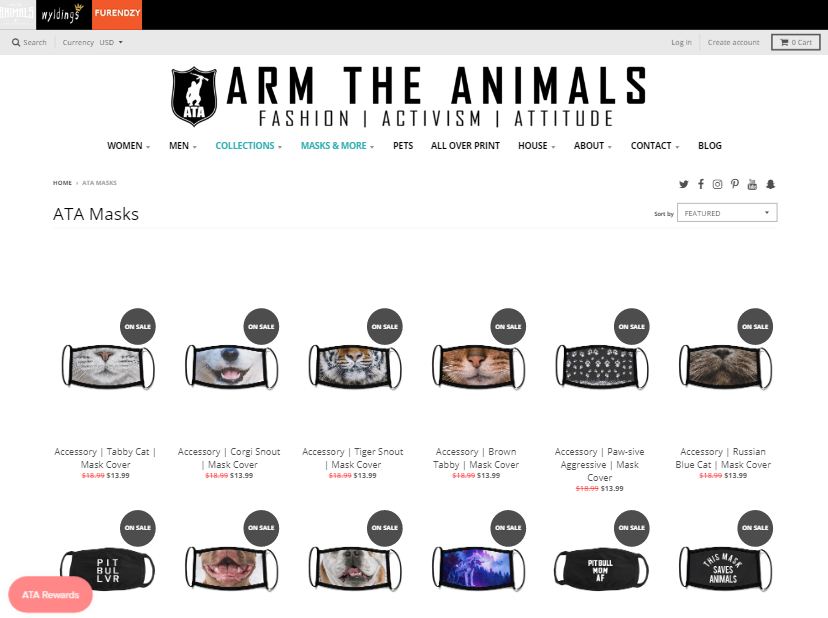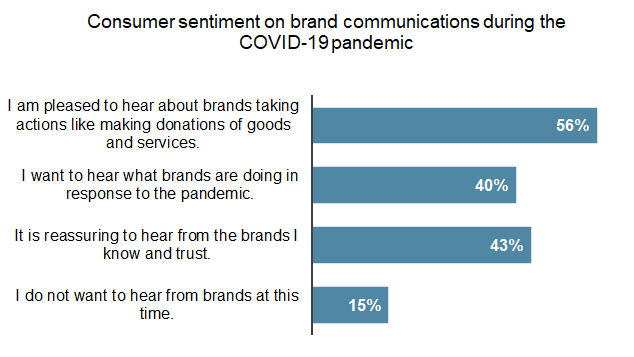The world has been shaken by the COVID-19 pandemic, with nearly every life and industry affected. Governments are working to keep their citizens safe while economies are struggling to stay stable. Small businesses around the world have been challenged financially, being forced to adapt to new forms of selling. As we navigate through the pandemic and prepare for its end, there’s several ways that businesses can strategize to make the most out of their situation.
Let’s go through five helpful tips that can guide your business to boosting sales during and after COVID-19.
How to increase sales during Coronavirus pandemic:
Reevaluate Your Offering
Communicate with Customers
Start Planning Ahead
Adjust Your Marketing Strategy
Improve Your SEO
Moving Forward
1. Reevaluate Your Offering
It’s no secret that the onset of COVID-19 has changed how we live our lives every day. This is one thing that you cannot ignore when it comes to your customers. Some products you sell may be irrelevant to their needs, while others may be more important than ever. Ask yourself the following questions to determine what you should still be selling during and after the pandemic.
What products do you sell that may no longer be relevant?
During the pandemic, you may be selling products that aren’t relevant to your customers anymore. For example, you may be selling travel or live event accessories or – travel and live events are extremely limited due to the pandemic, so you may not be selling many of those. To adapt to this and mitigate any lost sales, you may need to remove those products or alter them in a way that can adapt to at-home use.

Source: Vend HQ
A great example of adapting your products to customer’s needs is iHeartRaves. Their business mainly sells products for raves and live events, so to adapt to lockdown, they released a new “Cute & Cozy” collection.
Alternatively, once things start shifting back to a state of normalcy, you may find that some products you added to your store may no longer be needed by your customers. Many online stores started selling medical supplies, such as hand sanitizer and face masks, once the pandemic began to meet a need in the market. Once the pandemic begins to wind down, determine if those products are still appropriate to sell and if they should become permanent fixtures of your inventory.
What products can you sell that may be more relevant to customers?
Think about how the pandemic has affected your customers and how their needs may have changed. As we mentioned, many online stores may feel the need to add medical and cleansing supplies – it’s hard to ignore the massive boom that’s being seen among those products online. However, you should only add these products to your inventory if it makes sense for your business. If your online store sells books, it may not make sense to add hand sanitizer to your product offering.
However, face masks are extremely versatile, and can even be advertised as fashion accessories. This makes face masks a good way to meet customer’s new needs while also maintaining your brand.
 Source: CNET
Source: CNET
Arm the Animals, an activist fashion brand, combined the trend of face masks with their animal-focused message.
You may also find interesting: The Importance of eCommerce to the Fashion and Apparel Industry
Where can you move physical offerings to online venues?
If your business has a physical presence, it’s vital that you begin to move your business to online if you haven’t already. Take the time to build an online store that makes it easy for your customers to get what they need from your business without risking their health. An online store can be helpful in the long run as well. In fact, eCommerce sales are expected to rise to $4.88 trillion by 2021. With an online store, you won’t have to worry about decreased foot traffic or lockdowns having a negative effect on your business.
You can also use an online store to offer in-store or curbside pickup to your customers. This gives customers the option to buy from your store in a safer way, but still get their products quickly and without a delivery fee. According to Invesp, 65% of consumers already prefer to buy online and pick up in store to avoid shipping costs.
How can you readjust your service to better cater to customers?
It goes without saying that we live in confusing times. It’s extremely valuable to your customers that you bring a sense of clarity with your service. Whether customers need help processing a return or finding a product that they need, extending the reach of your customer service can make a huge difference. In research from Hiver, it was found that 66% of U.S. customers are willing to spend more money to do business with a company that offers great customer service.
Here’s a few ways that you can improve your customer service during and after the pandemic:
- Offer longer customer service office hours. This can help make up for the fact that customers cannot see you physically.
- Use more channels to increase your online support. Maintain availability on multiple channels, including phone, live chat, email, and even social media.
- Create more resources for self-service support. Put together a comprehensive knowledge base, glossary, How-To tutorials, and more to help customers.
- Be honest regarding expected wait and delivery times. This is especially important if your staff has been limited or is working from home due to the pandemic. Delivery times have also been delayed around the world – inform customers of how you’re handling this issue.
Return to top of page or Get your Ultimate Guide to Data Feed Optimization
2. Communicate with Customers
During and after the pandemic, it’s crucial that your business is constantly communicating with your audience. Businesses and customers are both experiencing many changes in their day-to-day life, whether it’s financial struggle or a simple change of routine.
According to research by 4 A’s, 43% of consumers find it reassuring to hear from brands that they know and trust during this time.

Source: 4 A’s
Utilize your messaging channels, including social media, to inform customers about what’s changing (and staying the same) with your business. This includes the following:
- Will all products still be available?
- Are you halting delivery to any countries or areas?
- Will there be any delays on production?
- What is the updated expected delivery time for products?
- How are you keeping customers and staff safe?
- What services are returning as the pandemic winds down?
By opening up a dialogue with your customers, you can gauge what changes they’d like to see your business make and respond to that valuable feedback. Make it clear that you care about more than just a customer’s wallet, and that you’re passionate about how you can help them in a meaningful way.
Return to top of page or Get your Ultimate Guide to Data Feed Optimization
3. Start Planning Ahead
If you had no crisis plan in place before the pandemic, then your business may have been caught off guard and suffered as a result. There’s no better time than the present to start planning on how you’ll be approaching the rest of the pandemic and how you’ll be returning back to normal once it’s over.
Of course, the pandemic has been largely unpredictable, with lockdowns starting and ending quickly. It’s impossible to plan with specific dates for reopening, so give your plan room to change if the situation alters at all. While we all want to increase sales, we also don’t want to lose sales either – look at what your business is doing right now and locate any weak points.
To start your plan, perform an audit of your business. Where are you losing sales, where are you gaining sales, and where have you stagnated? Determine how COVID-19 has impacted your business and industry as a whole and take measures to mitigate the damage. Focus on these key elements:
- Remote employee productivity and collaboration
- Disrupted supply chains and operations
- Tax and trade issues due to country lockdowns
- Brand response to COVID-19
- Postponed projects and campaigns
- New projects that address staff and customer needs
- Emergency funding and debt-relief grants
You’ll also want to monitor how your country is approaching its economy and travel, as this can directly affect your business during and after the pandemic. The decisions of your country’s government can influence the decisions of your business, so stay aware of all changes.
Return to top of page or Get your Ultimate Guide to Data Feed Optimization
4. Adjust Your Marketing Strategy
One of the first things you should have done once the pandemic began was comb through your existing marketing messaging and remove anything irrelevant or inappropriate. If you haven’t already, look through all of your scheduled campaigns, social media posts, and email marketing to determine what needs to be removed or changed. It’s also a good idea to think about your you can integrate distancing or health safety into your current marketing while maintaining relevancy.
Beyond content is the tone of your messaging. As we move closer to the end of the pandemic, we may be able to shift our tone back to normal, but you should still stay aware of how you’re speaking to potential and existing customers. Utilize these methods:
- Your messaging should be accurate and clear regarding the pandemic.
- Adopt a sympathetic tone, as many customers may also be experiencing hardships at this time.
- Avoid making jokes about the situation or approaching the pandemic with inappropriate humor.
- Don’t be serious all the time – a lot of people need a smile during these times. If your business can provide that, customers will remember you.
Your customers will be expecting your brand’s response to COVID-19. It’s vital that you do not use the pandemic as an excuse to advertise your products. Instead, brainstorm how you can offer assistance through your services, rather than capitalize on an unfortunate situation. It may be tempting to increase your sales this way, but customers can tell when you’re taking advantage of a difficult time.
If you’re running paid ads, you need to keep them all up to date regarding your inventory. You don’t want to be advertising products that are discontinued or out of stock. It may be a good idea to pause or lower the budget on most of your paid ad campaigns if you’re struggling financially due to the pandemic. Luckily, you can still advertise your business for free utilizing SEO. Let’s talk about that further.
Return to top of page or Get your Ultimate Guide to Data Feed Optimization
5. Improve Your SEO
Your business should already be optimizing for search engines if you have an online presence. During the pandemic, it’s newly important that your business appear high up on search engines when interested customers search for your products. You can’t rely on customers walking past your physical store during the pandemic, so you need to compensate for that lost foot traffic with increased online traffic.
More people are shopping online during the pandemic than ever before, and there’s no sign of this trend stopping once the pandemic is over. However, SEO looks a lot different during the pandemic for small businesses selling non-essential items. Namely, searchers are looking for answers to news and health-related questions rather than products. This is not to say that SEO still isn’t important for small businesses – it just means that you’ll need to take a different approach to optimization so as not to be drowned out.
SEO is an extremely dense topic with many varying aspects and methods, so we’ll cover the most important things you should optimize for during and after the pandemic.
- Improve your page and site load speed. This makes it easier for customers to quickly navigate your store and find the products you need. It also helps you rank higher, as Google factors in loading times when ranking.
- Target search terms related to COVID-19 if they are relevant to your business. Many more people are flocking to search engines to find information on the pandemic rather than other channels.
- Create and update evergreen content within your niche. This will stay relevant over time regardless of the current trend and build trust among your base, eventually turning interested visitors into customers.
- Update your Google My Business listing and optimize for local search. If you have an open physical business, this helps searchers find your business as it shows up on “near me” and “open now” queries. Alternatively, if you’ve had to close your physical business, you can use local search to direct customers to your online store.
- Keep tabs on your online shop's SEO performance. No SEO-improvement strategy would be complete without a way to track your progress. Make use of the key eCommerce metrics in Google Analytics to understand the impact of your optimizations.
Return to top of page or Get your Ultimate Guide to Data Feed Optimization
Moving Forward
As case numbers increase in some countries and decrease in others, it’s difficult to predict when COVID-19 will stop challenging the world. However, there are changes that your company can make to mitigate losses and increase sales during and after the pandemic. By meeting new customer needs, communicating regularly, planning effectively, adjusting marketing strategies, and focusing on SEO, your business can make the best out of a difficult situation.
Learn more about the impact of COVID-19 and how to adjust your strategy:
- Hard-Fought Battle - How Coronavirus Impacts eCommerce. [UPDATED]
- 4 ways to advertise for free during the COVID-19 pandemic
- How Big Brands Reacted to the COVID-19 Pandemic
- COVID-19: 7 Shopping Channels Offering Discounts to Retailers
- How to Move your Brick and Mortar to Online
- How to Profit Big Time with Google Shopping CSS [up to 20% discount for clicks]
